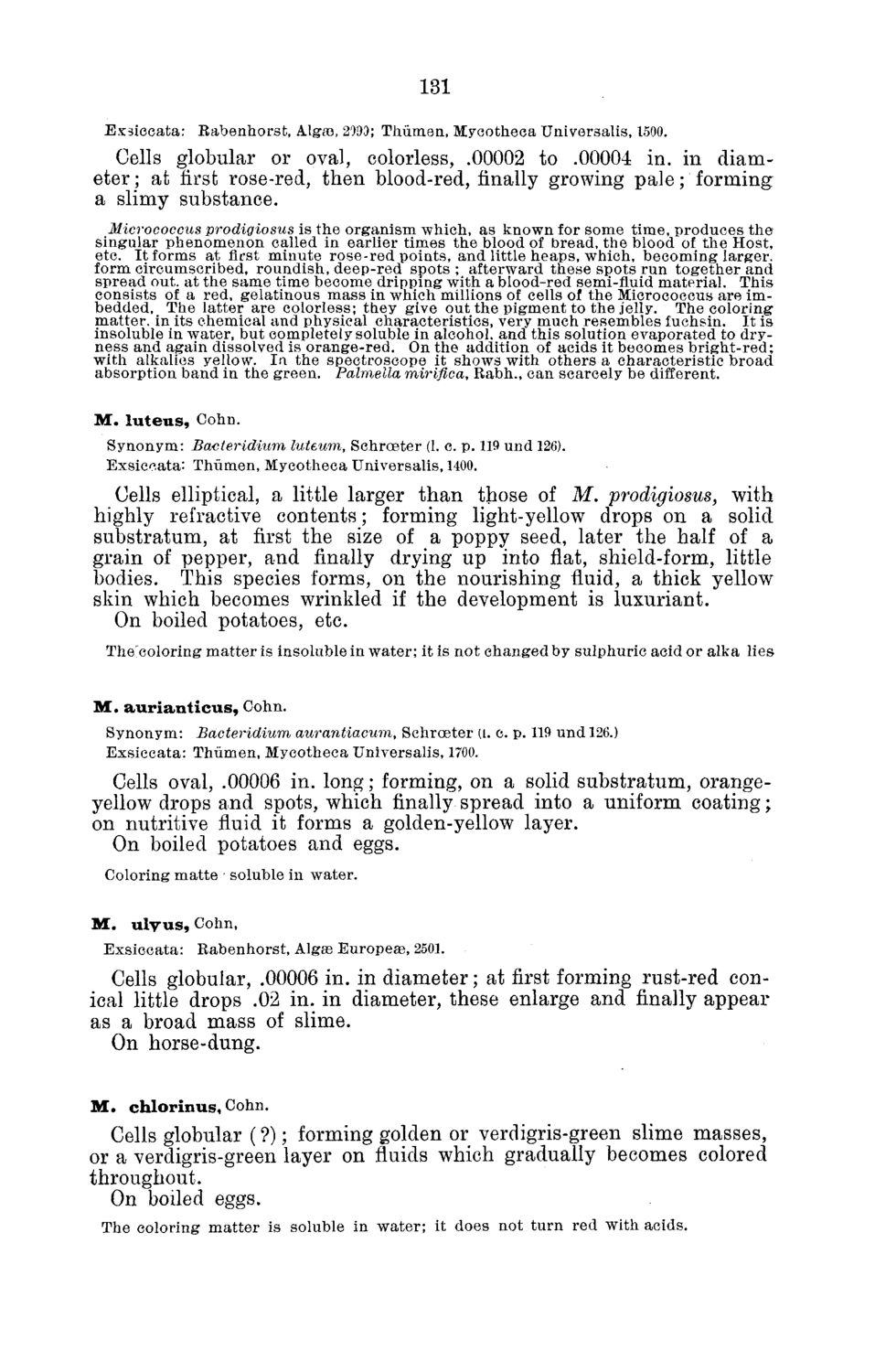| |
| |
Caption: Board of Trustees Minutes - 1882
This is a reduced-resolution page image for fast online browsing.

EXTRACTED TEXT FROM PAGE:
131 Exsiccata: Rabenhorst, Algaa, 2093; Thumen, Mycotheca Universalis, 1500. Cells globular or oval, colorless, .00002 to .00004 in. in diameter; at first rose-red, then blood-red, finally growing pale; forming a slimy substance. Micrococcus prodigiosus is the organism which, as known for some time, produces the singular phenomenon called in earlier times the blood of bread, the blood of the Host, etc. It forms at first minute rose-red points, and little heaps, which, becoming larger, form circumscribed, roundish, deep-red spots ; afterward these spots run together and spread out. at the same time become dripping with a blood-red semi-fluid material. This consists of a red, gelatinous mass in which millions of cells of the Micrococcus are imbedded, The latter are colorless; they give out the pigment to the jelly. The coloring matter, in its chemical and physical characteristics, very much resembles fuchsin. It is insoluble in water, but completely soluble in alcohol, and this solution evaporated to dryness and again dissolved is orange-red. On the addition of acids it becomes bright-red; with alkalies yellow. In the spectroscope it shows with others a characteristic broad absorption band in the green. Palmella mirifica, Rabh., can scarcely be different. M . l u t e u s , Cohn. Synonym: Baoteridium luteum, Schroeter (1. c. p. 119 und 126). Exsiccata: Thumen, Mycotheca Universalis, 1400. Cells elliptical, a little larger than those of M. prodigiosus, with highly refractive contents; forming light-yellow drops on a solid substratum, at first the size of a poppy seed, later the half of a grain of pepper, and finally drying up into flat, shield-form, little bodies. This species forms, on the nourishing fluid, a thick yellow skin which becomes wrinkled if the development is luxuriant. On boiled potatoes, etc. Thecoloring matter is insoluble in water; it is not changed by sulphuric acid or alka lies M . a u r i a n t i c u s , Cohn. Synonym: Bacteridium aurantiacum, Schroeter (i. c. p. 119 und 126.) Exsiccata: Thumen, Mycotheca Universalis, 1700. Cells oval, .00006 in. long; forming, on a solid substratum, orangeyellow drops and spots, which finally spread into a uniform coating; on nutritive fluid it forms a golden-yellow layer. On boiled potatoes and eggs. Coloring matte • soluble in water. M . u l y u s , Cohn, Exsiccata: Rabenhorst, Algas Europese, 2501. Cells globular, .00006 in. in diameter; at first forming rust-red conical little drops .02 in. in diameter, these enlarge and finally appear as a broad mass of slime. On horse-dung. M# c h l o r i n u s , Cohn. Cells globular (?); forming golden or verdigris-green slime masses, or a verdigris-green layer on fluids which gradually becomes colored throughout. On boiled eggs. The coloring matter is soluble in water; it does not turn red with acids.
| |